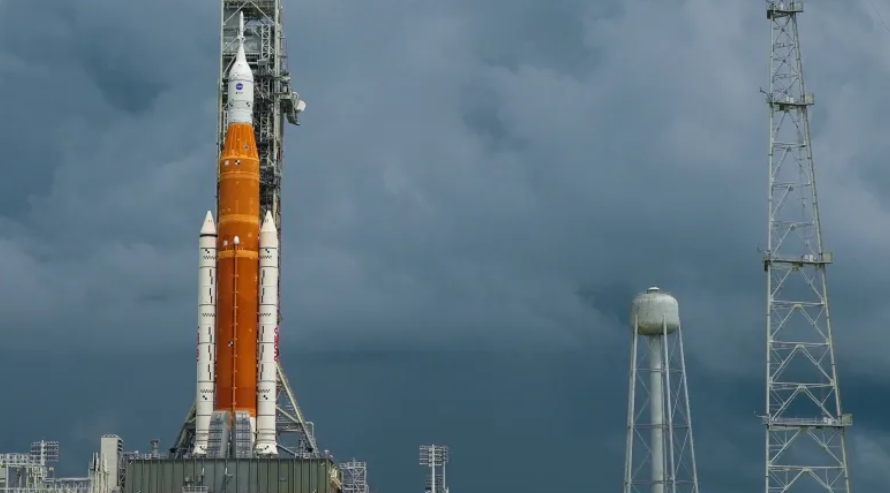The launch of NASA’s new Artemis I Moon rocket is facing a potentially lengthy delay after a second postponement.
Controllers tried and failed again on Saturday to get the Space Launch System (SLS) vehicle to lift off. They were thwarted by a fuel leak.
Engineers now want to inspect the rocket, and any repairs may need to happen in the workshop rather than on the launch pad.
The whole process is certain to lead to a setback of several weeks.
It means we may not see a third launch attempt before mid-October at the earliest.
The SLS is the most powerful rocket ever developed by the U.S. space agency, and is designed to send astronauts and their equipment back to the Moon after an absence of 50 years.
Much of the enormous thrust comes from burning almost three million litres of super-cold liquid hydrogen and oxygen in four big engines on the vehicle’s underside.
But when controllers sent the command early on Saturday morning to fill the rocket’s hydrogen tank, an alarm went off, indicating there was a leak.
The problem was traced to the connection where the hydrogen was being pumped into the vehicle.
Controllers tried a number of fixes, including allowing the hardware to warm up for short periods to reset the seal, but they were not successful.
The Artemis I mission is uncrewed, but NASA’s Artemis mission manager Mike Sarafin said the rocket’s future role in human spaceflight meant extreme care was still required in its operation.
“This is an incredibly hard business,” Sarafin told reporters. “This is an initial test flight of this vehicle. As was said: we’re going to fly when we’re ready. And as part of this initial test flight, we’re learning the vehicle; we’re learning how to operate the vehicle.”
The leaky seal on the SLS could conceivably be fixed on the launch pad. But there are batteries in the termination system used to destroy the rocket in the event of a wayward launch that will require recertification beyond this coming week, and this can only be done in the workshop.
Rolling the vehicle back to the engineering building makes a third lift-off attempt before mid-October unlikely.
“In order to test our batteries, change out the batteries, we have to roll back,” said Jim Free, NASA’s associate administrator for exploration systems development.
Saturday’s launch attempt had been scheduled for the start of a two-hour window beginning at 14:17 local time.
The 100-metre-tall vehicle’s objective is to hurl a human-rated capsule, called Orion, in the direction of the Moon, something that hasn’t happened since Project Apollo ended in 1972.
NASA had first tried to launch the rocket on Monday. That attempt was waved off when controllers couldn’t be sure the four big engines at the base of the core-stage were at the correct operating temperature.
Subsequent analysis indicated that a sensor was almost certainly outputting inaccurate readings. The power units, in all probability, were in the right condition to go fly.


